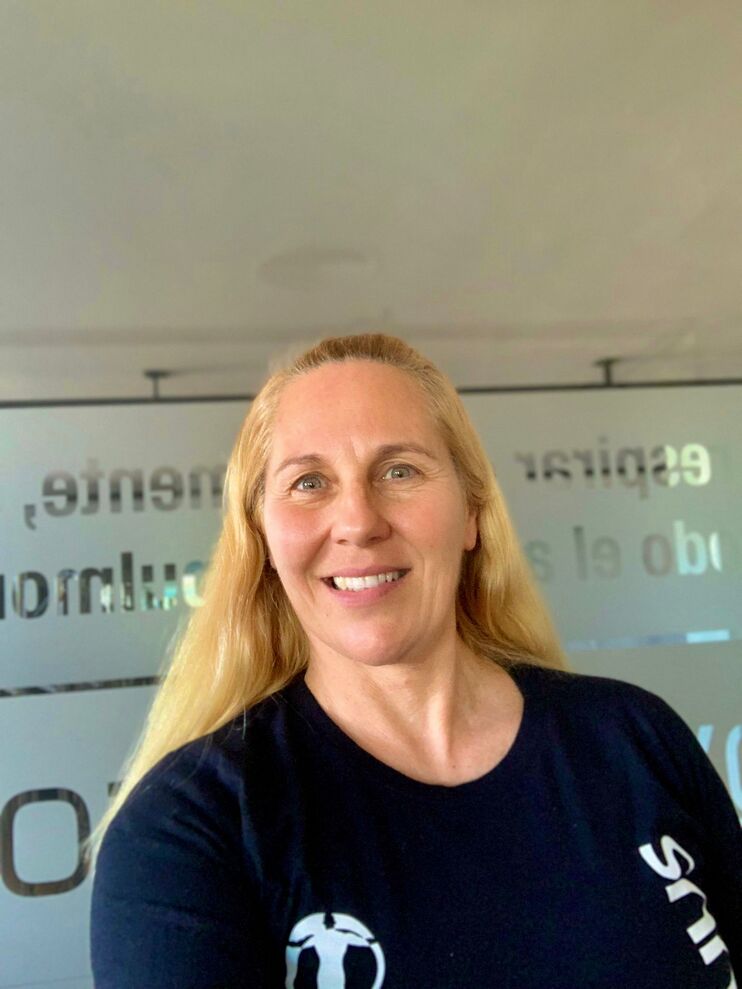What does osteopathy consist of?
Osteopathy at Estudio Aequus is a therapeutic discipline that seeks to restore balance and harmony in the body. Unlike other conventional treatments, osteopathy considers the body as an interconnected whole, where any dysfunction in one part can affect other areas of the body.
Osteopathy is based on the principle that the body has the innate ability to heal itself. The osteopath uses his hands to evaluate the mobility of the different structures of the body, such as bones, muscles, organs and soft tissues. Through manipulation and mobilization techniques, the osteopath seeks to restore the normal function of these structures and promote healing.

Osteopathy can be beneficial for a wide range of health conditions, including back pain, sports injuries, digestive disorders, headaches and migraines, respiratory problems, sleep disorders and stress.
By addressing the underlying causes of these problems, rather than simply treating the symptoms, osteopathy can provide lasting relief and improve patients’ quality of life.
In addition to treating specific conditions, osteopathy can also be used as a form of preventive medicine. By maintaining the body’s health and balance, future injuries and illnesses can be prevented. Osteopaths can also provide nutrition, exercise and lifestyle advice to help patients maintain overall good health.
Pathologies treated by an osteopath
An osteopath can treat a wide variety of pathologies and physical conditions. These include back pain, sports injuries, migraines, digestive disorders, respiratory disorders, stress and anxiety, among others. If you are suffering from any of these conditions, an osteopath can give you relief and help you regain your well-being.
What techniques does an osteopath apply?
Osteopaths use different techniques to address body dysfunctions. Some of these techniques include soft tissue stretching and manipulation, joint mobilization, lymphatic drainage and myofascial release. These techniques are designed to restore mobility and balance to the body, allowing the body to heal naturally.
Osteopathic treatments
The number of osteopathic sessions you will need will depend on the nature of your condition and how your body responds to treatment. Initially, more frequent sessions are often recommended to address existing imbalances. As you progress, the sessions can be spaced further apart.
Remember that everyone is different and results may vary. A trained osteopath will guide you through the entire treatment process.
Benefits of osteopathy
Osteopathy offers several benefits that can significantly improve your quality of life. We will highlight some of them below.
Little intrusive
Osteopathy is a non-invasive treatment that avoids the use of drugs and surgery. Instead, it focuses on enhancing the body’s innate ability to heal itself. This means that the possible undesirable side effects associated with other treatments are minimal.
Pain relief
One of the main goals of osteopathy is to relieve chronic or acute pain that you may be experiencing. The osteopath will work to identify and address the underlying causes of pain, allowing you to find lasting relief. Don’t forget that each person is unique, and in some cases several sessions may be required to obtain significant results.
Improved quality of life
By restoring mobility and balance to your body, osteopathy can help you improve your overall quality of life. With a healthier, unrestricted body, you can enjoy greater energy, flexibility and emotional well-being.
Estudio Aequus, experts in osteopathy
If you are interested in looking for a center specialized in osteopathy, Estudio Aequus is an excellent choice. Our expert osteopaths have the experience and expertise to provide you with the best care and support throughout the treatment process. We know that each person is unique, so we customize each session to meet your specific needs.
Frequently asked questions about osteopathy
What are the differences between a physical therapist and an osteopath?
While both physical therapists and osteopaths work to improve health and physical well-being, there are significant differences in their treatment approaches. While physiotherapists focus primarily on the musculoskeletal system and use techniques such as therapeutic exercise and electrotherapy, osteopaths have a more holistic view and treat the body as an integrated whole.
How many osteopathic sessions will I need?
The number of osteopathic sessions required varies according to the individual’s physical condition and the body’s response to treatment. In general, we recommend a gradual and progressive treatment approachwith more frequent initial sessions and a gradual decrease as the body becomes more balanced. Your osteopath will be able to provide you with a more accurate estimate after evaluating you.
How long does an osteopathy session last?
The duration of an osteopathic session can vary, but generally ranges from 45 minutes to an hour. between 45 minutes and one hour. During this time, the osteopath will perform an initial assessment, listen to your symptoms and needs, and apply relevant techniques to address your specific restrictions.
It is important to remember that everyone is different, so the length of sessions can be adjusted according to your individual circumstances.

